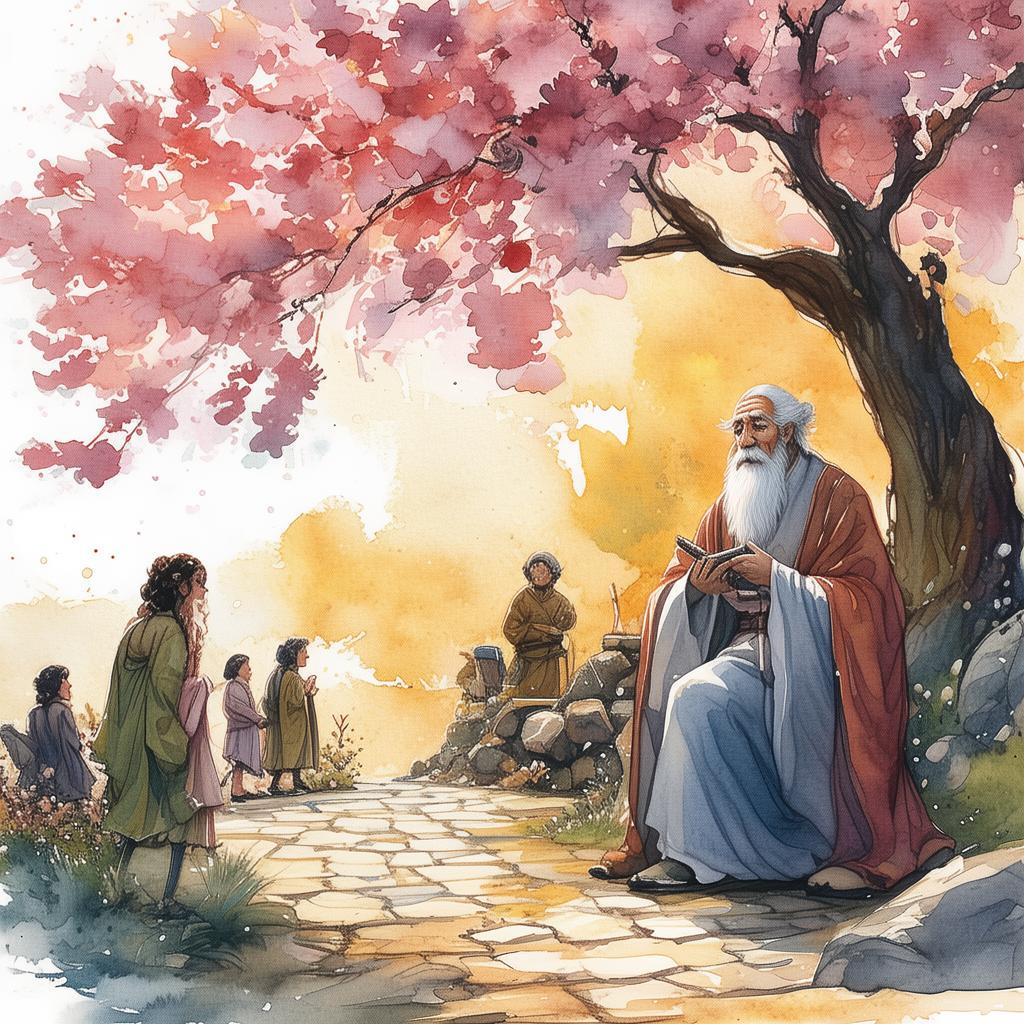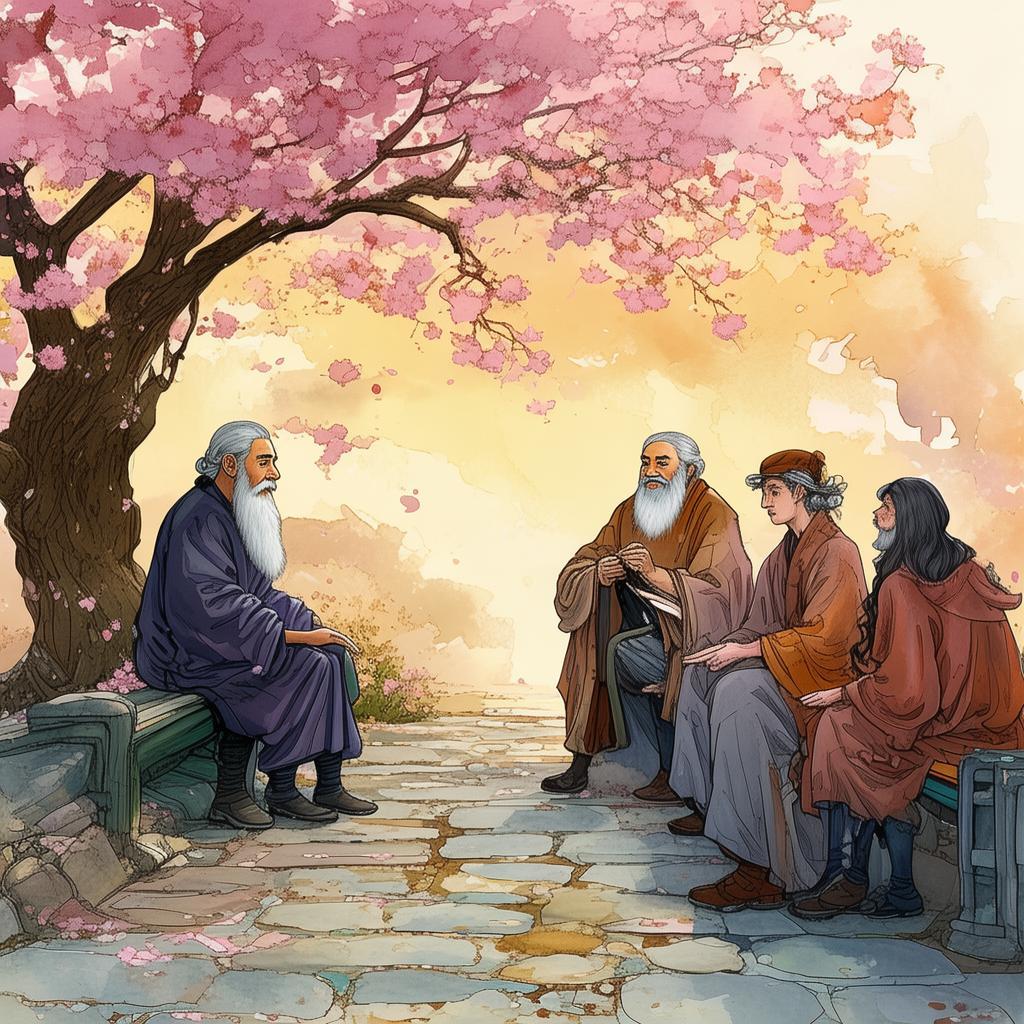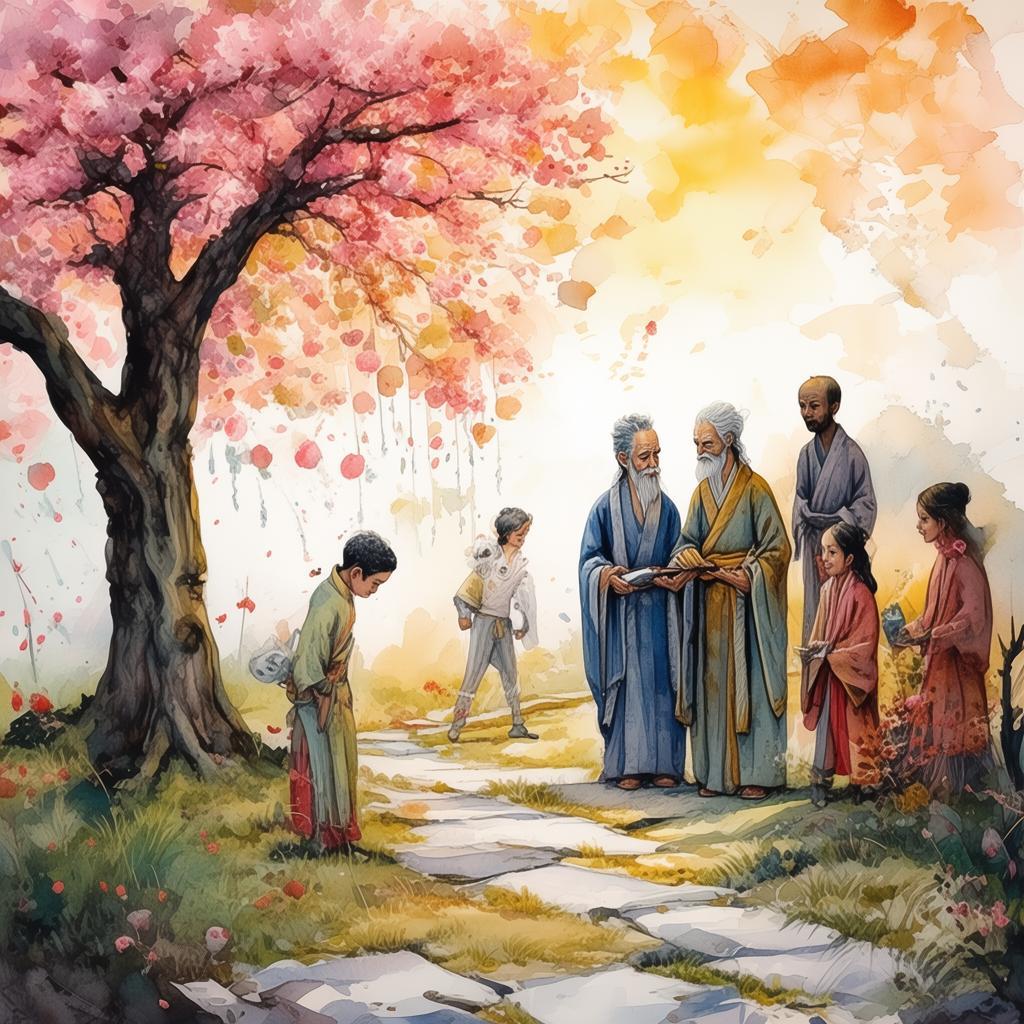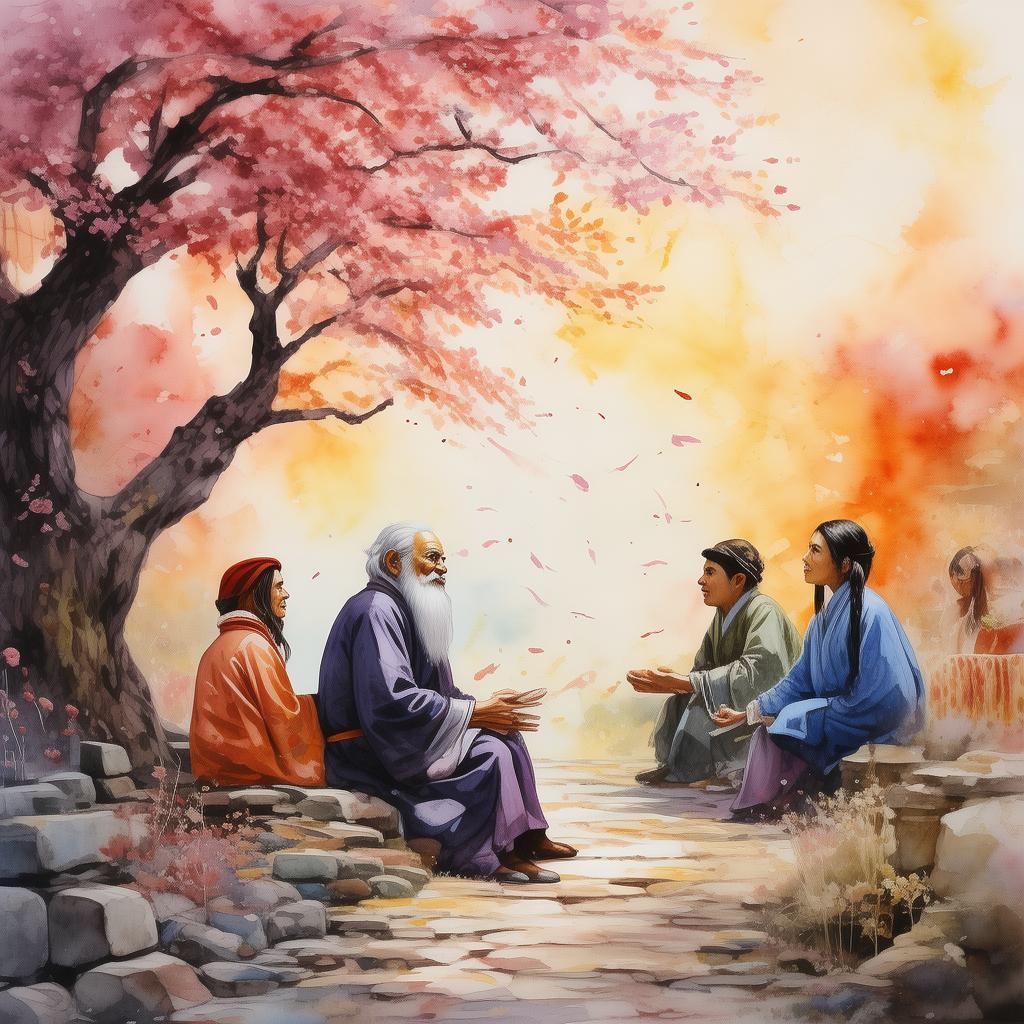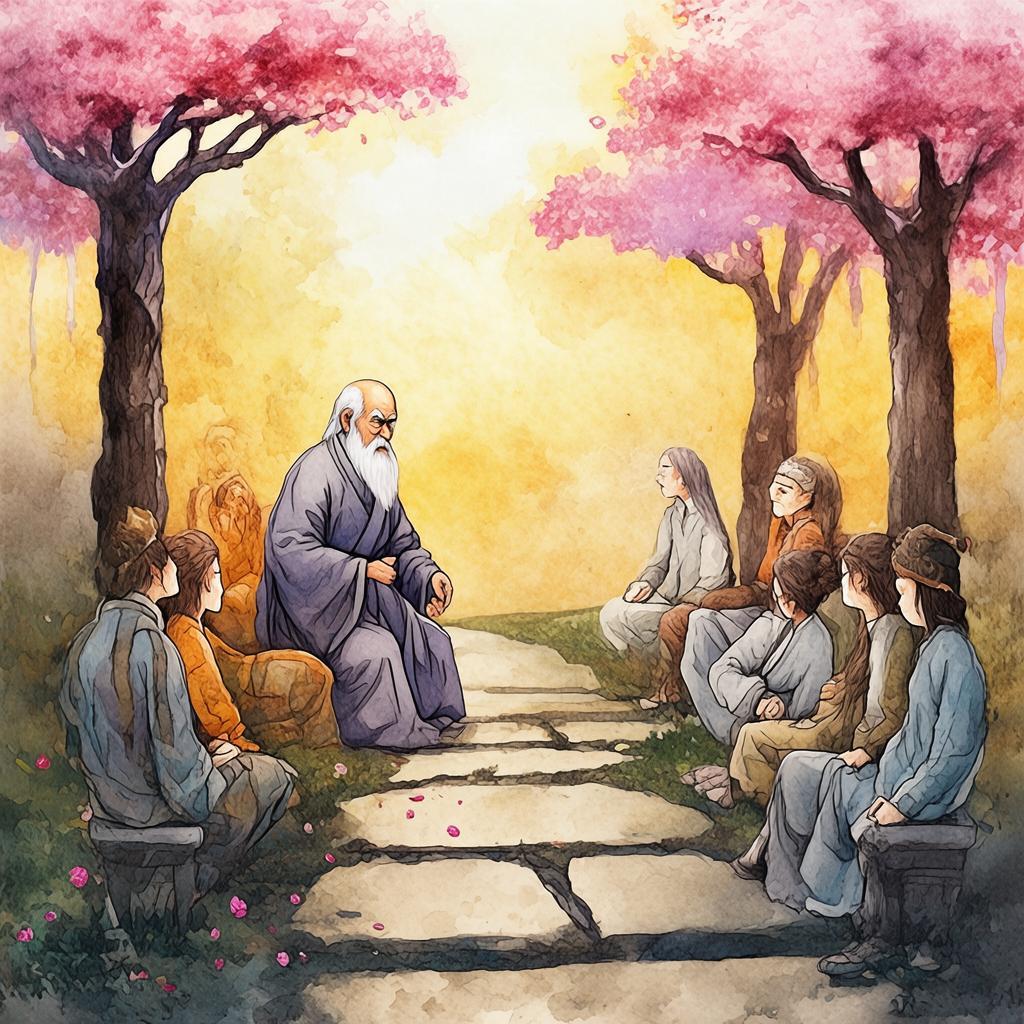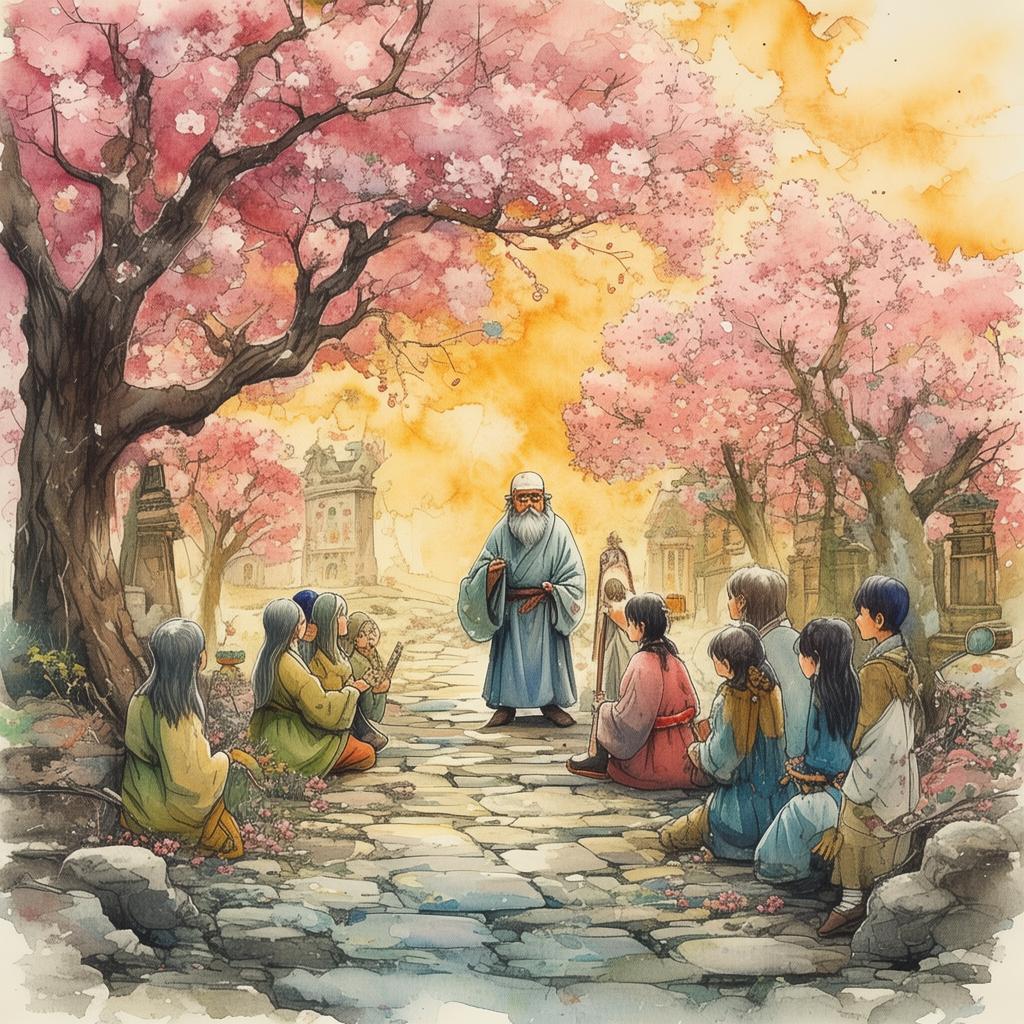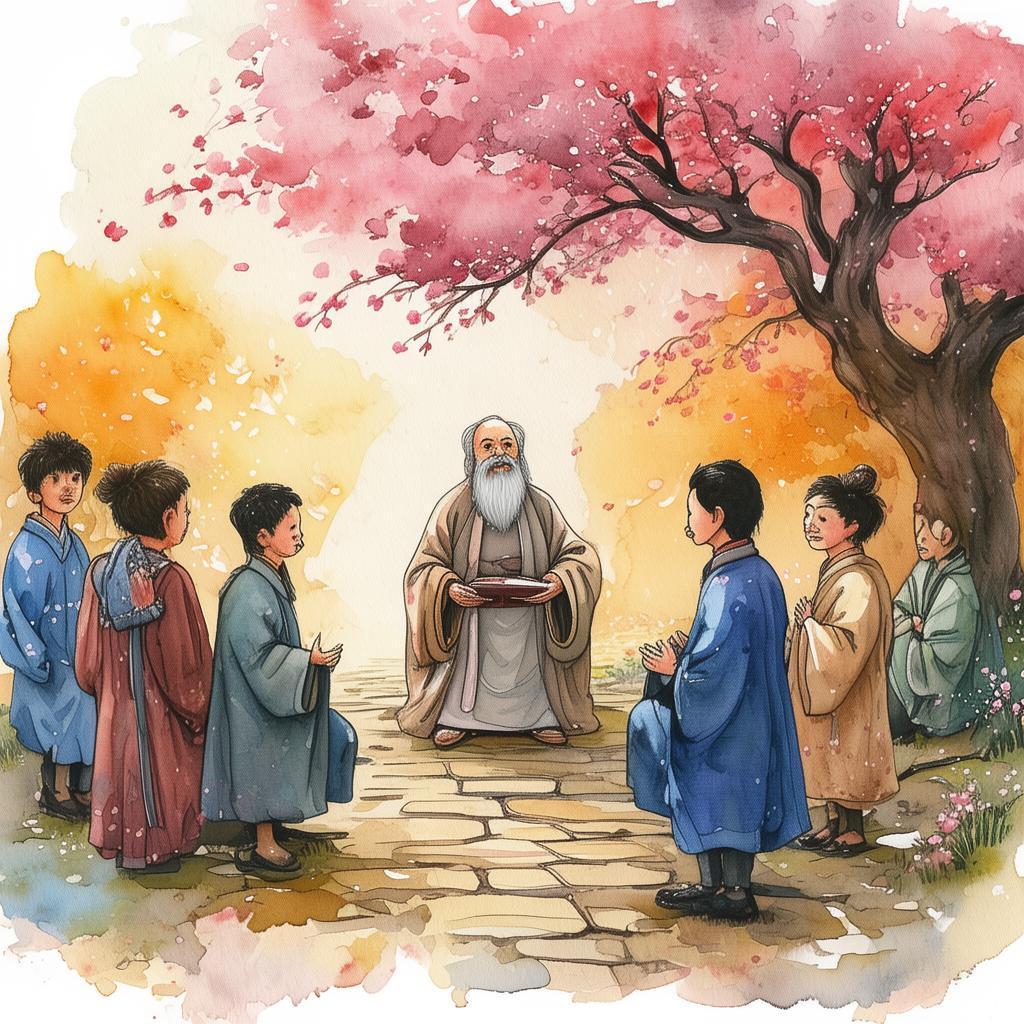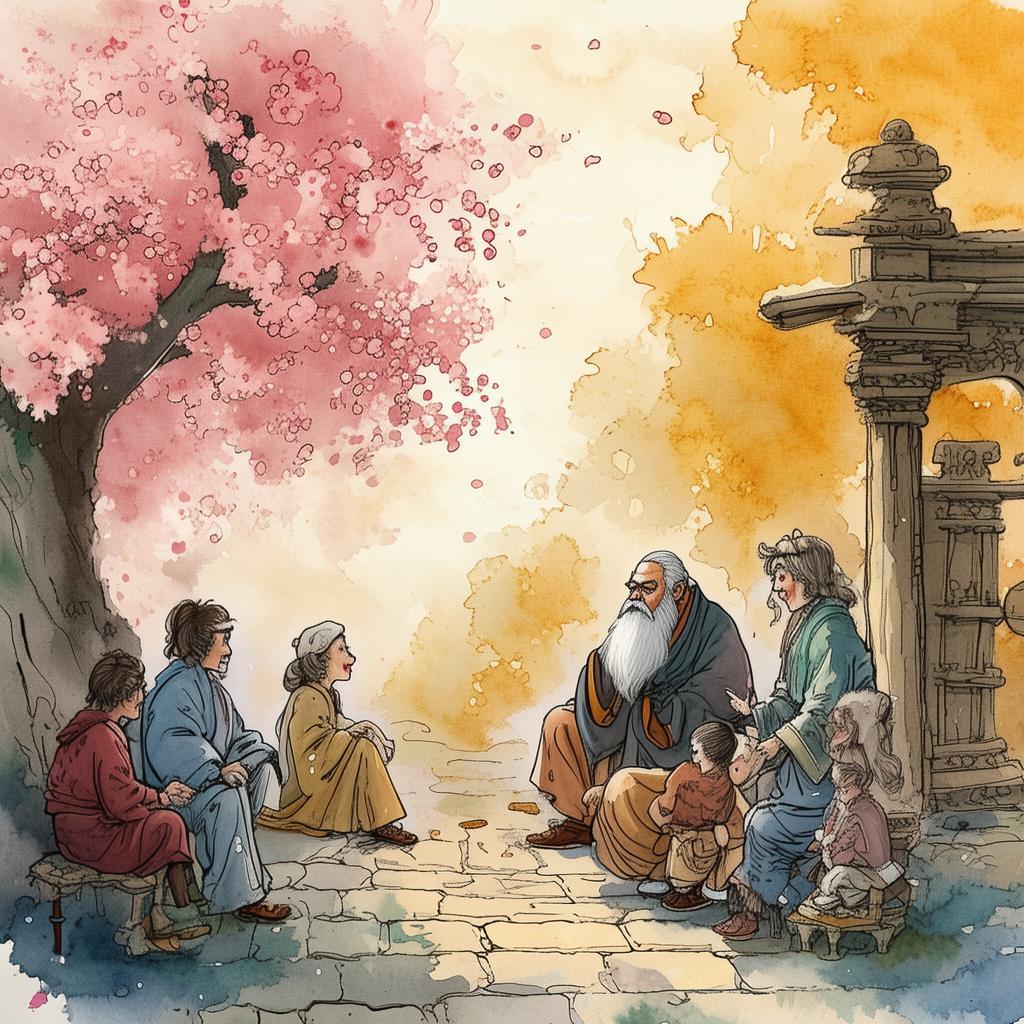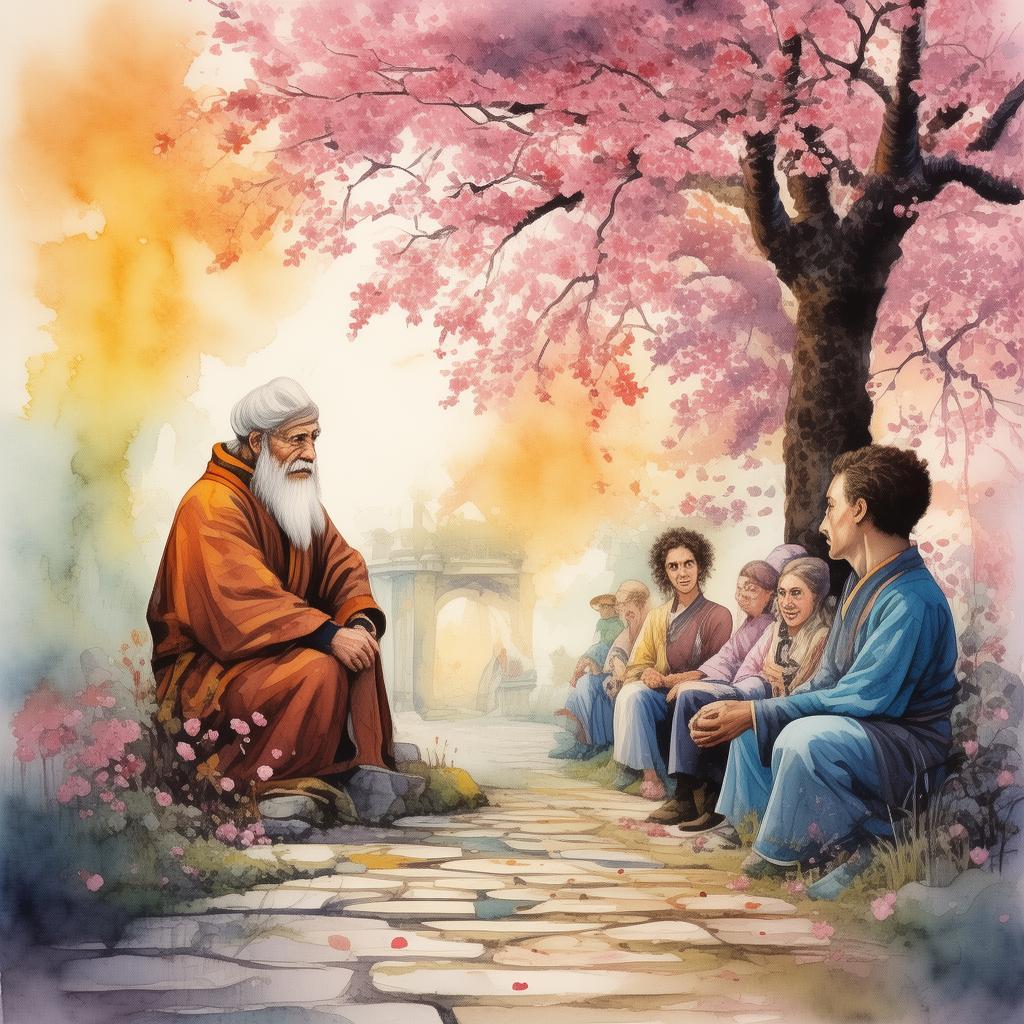Whispers of the Zen Garden
In the heart of ancient Japan, nestled between towering mountains and a tranquil river, there stood a Zen garden known as the Garden of the Infinite Mind. It was here that young Monk Kaito sought enlightenment, guided by the Fourfold Path as outlined in The Sage's Insight.
Kaito had spent years in the monastic life, mastering the disciplines of meditation, mindfulness, and compassion. Yet, he felt a void within, a yearning for something beyond the simple life of a monk. It was this yearning that led him to the Garden of the Infinite Mind, where he hoped to find the answers he sought.
The garden was a marvel of nature's artistry, meticulously crafted to evoke a sense of peace and harmony. A stone lantern stood at the entrance, its light flickering softly in the gentle breeze. The path that wound through the garden was lined with moss-covered stones, each one placed with intention to guide the soul on its journey.
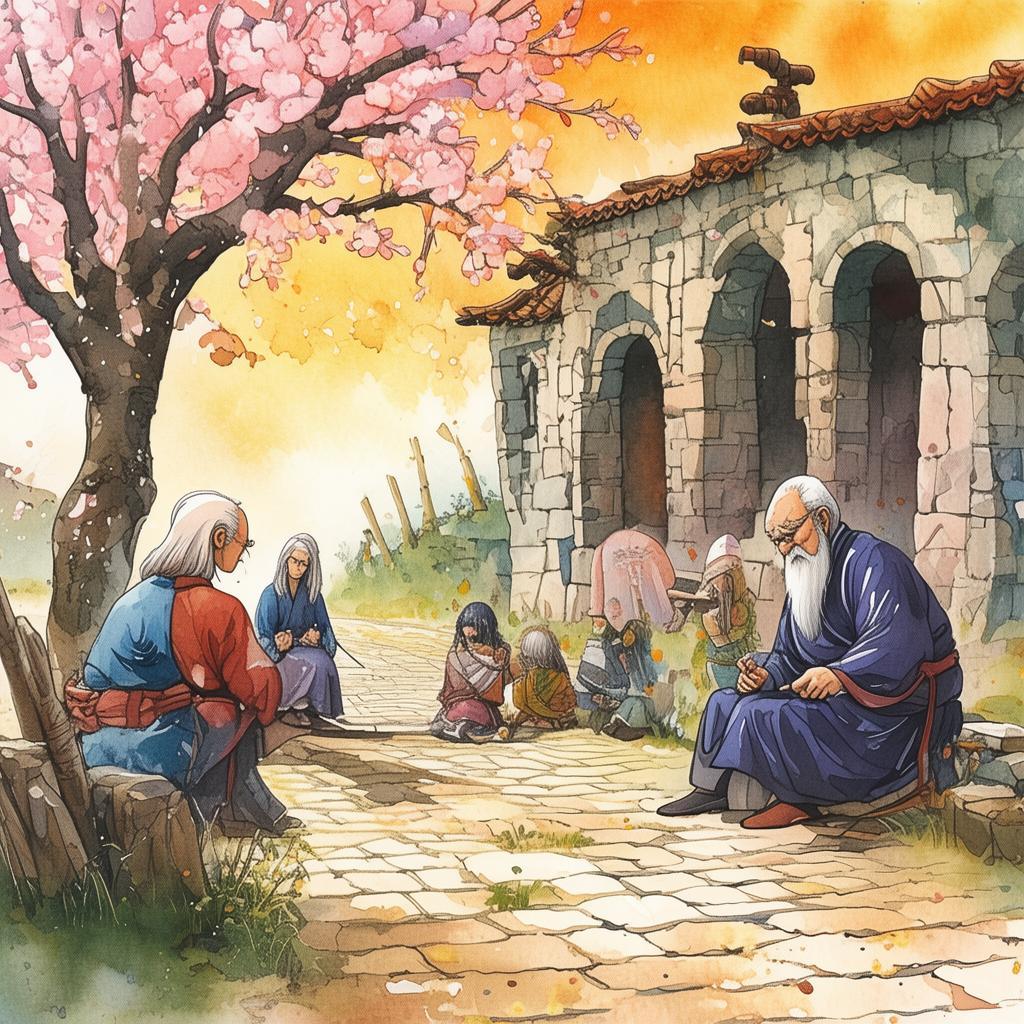
Kaito began his journey with the first step of the Fourfold Path: Right View. He meditated deeply, seeking to understand the true nature of reality. As he sat in the lotus position, he felt the world around him fade away, leaving only the sound of the river and the rustling leaves. In this state of profound stillness, he realized that the world was not as it appeared. The mountains were not just stone and earth, but the embodiment of patience and endurance. The river was not just water, but the symbol of flow and adaptability.
The second step of the path was Right Intention. Kaito understood that his intentions must be pure, free from desire and aversion. He resolved to act with compassion and kindness, to see the good in all things. As he walked through the garden, he encountered a small, injured bird. Without hesitation, he picked it up and carried it to a safe place where it could recover.
The third step was Right Speech. Kaito knew that his words had the power to heal or harm. He vowed to speak only the truth, to be gentle and understanding. He met a fellow monk who was struggling with his own doubts. Instead of judgment, Kaito listened, offering words of encouragement and wisdom.
The fourth and final step was Right Action. Kaito understood that his actions must be in harmony with his intentions and speech. He worked tirelessly to care for the garden, tending to the plants and clearing away debris. His actions were not just for the beauty of the garden, but for the peace and tranquility it brought to all who visited.
As Kaito continued his journey, he encountered trials that tested his resolve. A storm swept through the garden, uprooting trees and damaging the structures. He could have become angry or despondent, but instead, he saw the storm as a natural part of life, a reminder of the impermanence of all things.
In the aftermath of the storm, Kaito found himself at the center of the garden, where a single, ancient tree stood. Its roots were exposed, and its branches were twisted and gnarled, yet it stood firm against the elements. Kaito realized that this tree was a symbol of his own spirit. Like the tree, he had been through much, but he had not been destroyed. Instead, he had grown stronger.
With a newfound sense of clarity and purpose, Kaito returned to his meditation. He felt the weight of his doubts lift, replaced by a deep sense of peace and enlightenment. He understood that the Fourfold Path was not a destination, but a journey. It was a path that he would continue to walk, learning and growing with each step.
The Garden of the Infinite Mind had become more than a place of beauty; it was a sanctuary for the soul. Kaito knew that he would return, time and again, to find solace and guidance. And as he left the garden, he felt a profound connection to the world around him, understanding that enlightenment was not just a state of being, but a way of living.
Whispers of the Zen Garden is a story of enlightenment, a tale of a young monk's journey through the Fourfold Path, and the trials he faces to discover the true nature of his spirit. It is a story that resonates with the universal quest for inner peace and understanding, inviting readers to reflect on their own paths to enlightenment.
✨ Original Statement ✨
All articles published on this website (including but not limited to text, images, videos, and other content) are original or authorized for reposting and are protected by relevant laws. Without the explicit written permission of this website, no individual or organization may copy, modify, repost, or use the content for commercial purposes.
If you need to quote or cooperate, please contact this site for authorization. We reserve the right to pursue legal responsibility for any unauthorized use.
Hereby declared.
